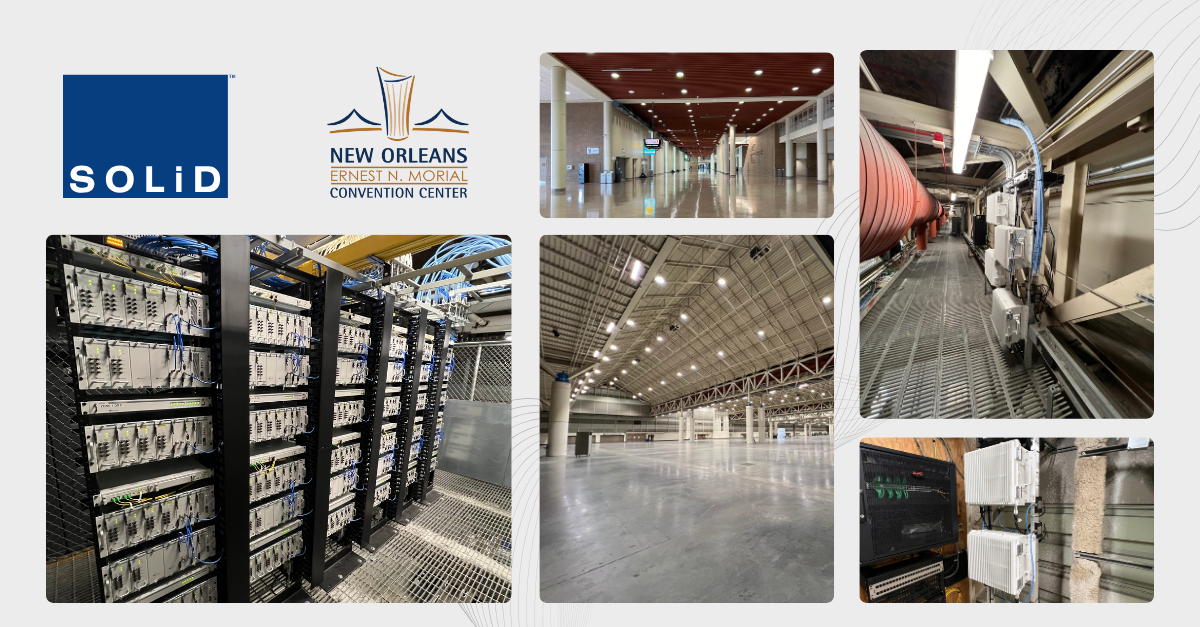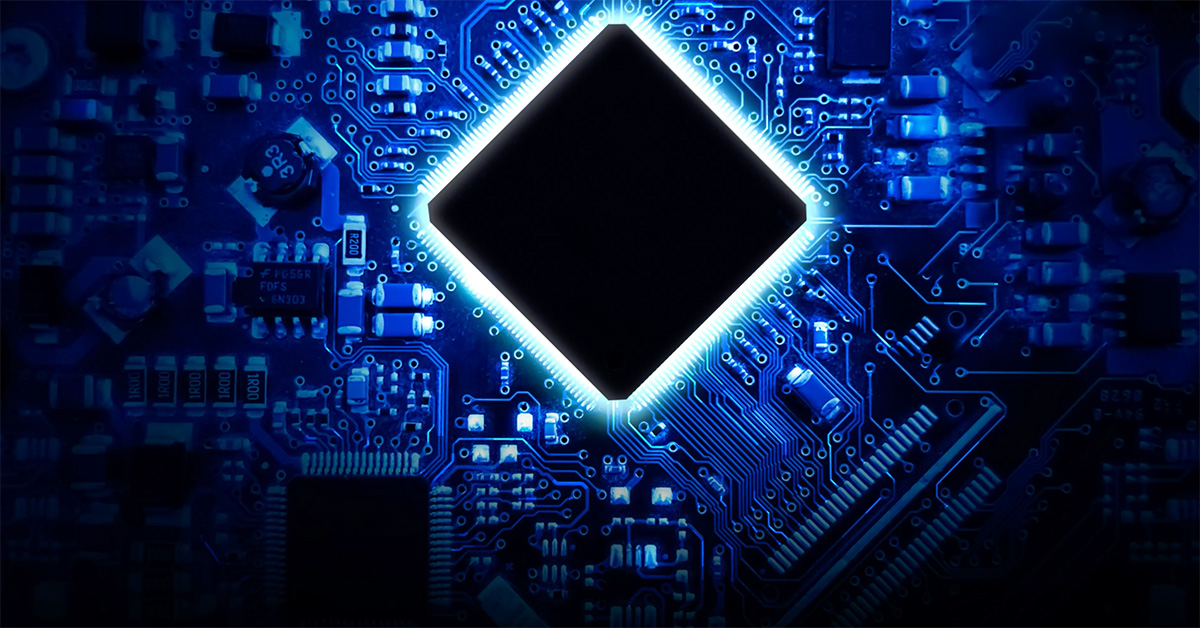Does the U.S. Mobile Industry Need More 5G Spectrum?
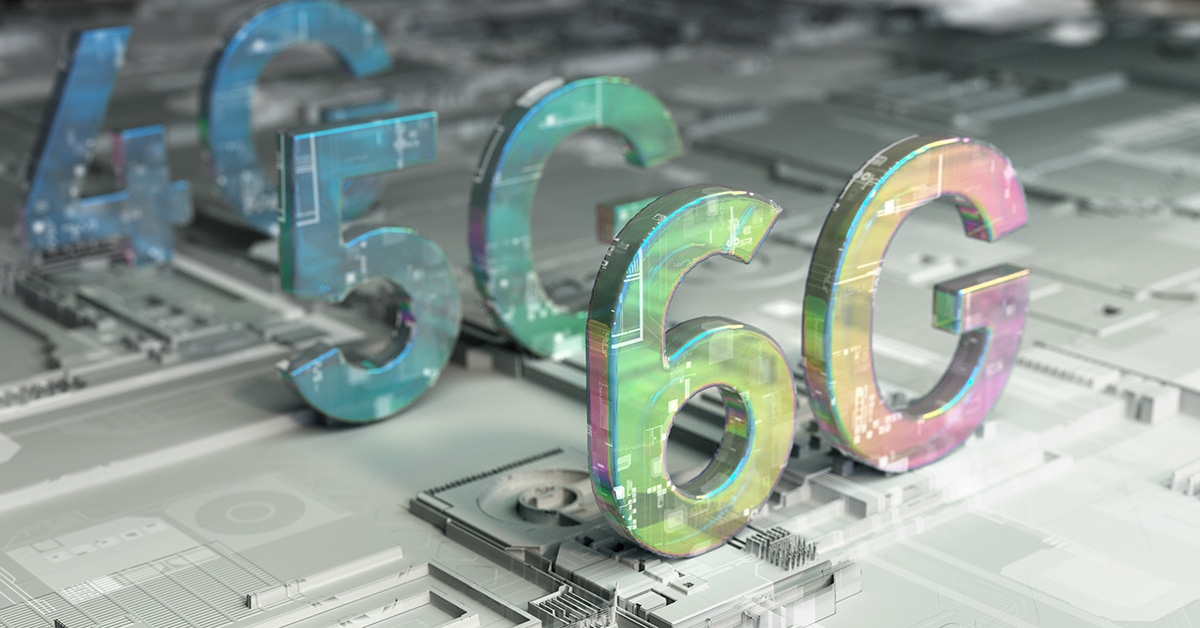
Today’s hyper-connected world is driving explosive network growth as 5G adoption continues at a frenetic pace. Plans for the rollout of 5G-Advanced and 6G networks are already heating up, even as many network service providers are still deploying mid-band 5G spectrum. Anticipating this future growth, some industry pundits suggest that the U.S. mobile industry will exceed available network capacity soon without more spectrum allocations.
Before making any hasty decisions, perhaps we should take a step back and realistically evaluate the current and future state of affairs.
Spectrum Scuffles
Two U.S. Congress members recently introduced legislation requiring the Federal Communications Commission (FCC) to auction at least 600 megahertz of spectrum between 1.3 and 13.2 GHz within three years and at least 1,250 megahertz of spectrum within six years. The proposed bill, known as the Spectrum Pipeline Act of 2024, also would direct the National Telecommunications and Information Administration (NTIA) to identify at least 2,500 megahertz of mid-band spectrum to reallocate from federal use to commercial wireless services within the next five years.
Likewise, the industry trade organization 5G Americas recently published a white paper that calls for a comprehensive roadmap to introduce new commercially available spectrum to support the rollout of 5G-Advanced and future 6G networks. However, the 5G Americas white paper focuses on the upper mid-band spectrum, ranging from 7.125-15.35 GHz, noting that “more spectrum helps ensure effective deployment of future networks and drive the emergence of groundbreaking technologies.”
These plans presuppose that more spectrum is indeed required for wide-area 5G networks and not for private networks using unlicensed frequency bands such as the Citizens Broadband Radio Service (CBRS).
5G Coverage Evolution
However, it would take some time for these new spectrum bands to be available for cellular networks, while the current 5G networks should evolve to meet the various needs for capacity and bandwidth. As 5G technology evolves to embrace cloud-native architecture and mid-band frequencies, mobile network operators (MNOs) are changing the way they plan and deploy their networks. At the same time, traditional macro cell sites are reaching saturation, pushing MNOs to densify 5G networks by building out small cells. This small cell approach provides additional 5G coverage, capacity, speed, and performance more quickly and efficiently — particularly in high-traffic urban and suburban areas.
With small cells covering shorter distances, these network architectures use the available spectrum more effectively to meet escalating demands for higher speeds, greater bandwidth, and lower latency. By serving smaller coverage areas located closer to subscribers, small cells can reuse the same frequencies more often, increasing network capacity without radical increases in spectrum allocation. This is not to say that no new spectrum will ever be required. New spectrum for 6G and beyond will be necessary, opening opportunities to drive new innovation.
As the steady drumbeat calling for more spectrum gets louder, it’s important to remember that the journey from 5G to 6G and beyond will be a marathon, not a sprint.
Capacity Where It Is Needed
Considering that 80 percent of all mobile traffic occurs indoors, perhaps the current focus should be on how much spectrum is needed for in-building communications and how it can be used most effectively. Just as small cells are used in the outdoor network to densify network capacity, in-building wireless networks using small cells, distributed radios, and distributed antenna systems (DAS) can deliver dedicated capacity and coverage indoors.
These in-building wireless solutions offload the capacity demanded of the outdoor network, mitigating or at least delaying the need for additional spectrum. Until radio and antenna technologies catch up to the physical limitations imposed by higher frequency spectrum, reaching above 6 GHz is impractical for wide area coverage and unnecessary for indoor coverage, with some exceptions such as very high capacity venues like stadiums and arenas.
Sustainable Frequencies
Spectrum above 6 GHz is incredibly expensive to deploy and operate due to poor propagation. It is not currently sustainable, requiring significantly higher transmit power than lower frequencies. Densifying the network by deploying in-building networks with sub-6 GHz spectrum is more cost-effective. The most attractive large chunk of new spectrum under consideration for mobile networks in the U.S. is 3100-3450 MHz. While this spectrum is also used by the Department of Defense, CBRS has proven the concept of shared spectrum with a priority access system and interference mitigation methods.
A modular platform like the SOLiD ALLIANCE 5G DAS supports a huge amount of bandwidth from all the major MNOs, providing access to plenty of in-building capacity with the currently available 5G spectrum. The key is proper network planning and design to allocate sufficient sector density with the available frequencies.
For help designing a robust DAS system that makes the most of the available spectrum for outstanding in-building performance, contact the experienced SOLiD Engineering and Design services team. To learn more, visit: www.solid.com/us/services/engineering-and-design.
SOLiD Tapped to Empower 5G Connectivity Throughout New Orleans Convention Center
SOLiD, the leader in cellular in-building mobile coverage, today announced that systems integrator Wireless Services selected the SOLiD ALLIANCE 5G distributed antenna system (DAS) to enhance 5G connectivity in the New Orleans Ernest N. Morial Convention Center (NOENMCC). The new DAS platform adds 5G C-Band support to ensure sufficient bandwidth and coverage for convention center attendees, anticipated to exceed 800,000 in 2024.
The DAS expansion includes SOLiD ALLIANCE Mid-Band HROU_4000 equipment to provide neutral-host connectivity with major mobile service providers operating in mid-band 5G. The ALLIANCE HROU_4000 DAS remotes will enable 2x2 multiple input, multiple output (MIMO) support for the 3.45 GHz and 3.7 GHz C-Band spectrum over a single fiber strand, delivering 760 MHz of fully occupied bandwidth.
As networks adopt additional 5G spectrum, legacy DAS architecture requires updates to support new frequency bands, as well as time division duplexing (TDD) timing sequence, which is critical for precise synchronization in 5G networks. SOLiD’s ALLIANCE 5G DAS platform offers the simplest, most reliable TDD operation, with synchronization occurring closer to the mobile device for robust reliability and peak performance.
“Steeped in the history and culture of New Orleans, our award-winning Convention Center delivers remarkable experiences infused with southern hospitality,” said Michael J. Sawaya, president and CEO of NOENMCC. “This in-building communications technology investment is a strategic part of our significant capital improvement project designed to meet the highest possible technology and sustainability standards to delight exhibitors and attendees alike.”
“At Wireless Services, we are gratified to partner with SOLiD as we continue our legacy of reliable wireless deployments in large, complex public venues,” said Aron Matassa, partner/CEO, Wireless Services. “Based on our past experience working with SOLiD, we are confident that the ALLIANCE 5G DAS platform will deliver on the promise of pervasive 5G coverage throughout the New Orleans convention center.”
“With 1.1 million square feet of exhibit space under one roof and widely fluctuating capacity needs, this project presents considerable challenges for in-building connectivity,” said Scott Deweese, president of SOLiD Americas. “The SOLiD ALLIANCE 5G DAS offers a modular, scalable design to support massive mobile traffic demands and simplify future technology evolution, improving overall service quality to transform the hospitality guest experience.”
The ALLIANCE Mid-Band HROU_4000 deployment expands on existing SOLiD DAS deployments that provide commercial and public safety communications at the NOENMCC. In addition to delivering affordable high performance, SOLiD equipment also offers industry-leading sustainability, making it an ideal choice for the gold-level LEED-certified convention center.
DAS system upgrades are scheduled to be completed before important upcoming events at the convention center, including activities related to the 2025 Super Bowl, which will be held nearby.
Why Do Data Centers Need 5G Connectivity?

Welcome to the hyperscale era. More than 5 billion internet users worldwide are driving demand for an ever-growing number of data centers, with a particular emphasis on massive data centers that can support thousands of servers.
Maintenance of these hyperscale data centers is critically important. Typical service level agreement (SLA) terms mandate nearly 100 percent uptime and “five nines” reliability, requiring peak performance and minimal downtime. In fact, data center outages can cost from $100,000 to $500,000 per hour or more, so speed is crucial when operations are down.
Although many aspects of hyperscale data center operations are fully automated, technicians often need to visit facilities to repair outages, as well as to conduct upgrades and perform regular maintenance. With the popularity of bring-your-own-device (BYOD) policies, many maintenance technicians rely on 5G service from mobile network operators (MNOs) when working in the data center. Additionally, hyperscalers increasingly use Internet of Things (IoT) 5G connectivity for environmental monitoring and measurement.
Unfortunately, when in-building mobile coverage is spotty or even nonexistent, calls are missed and connections get dropped. This means that technicians cannot communicate quickly with support personnel or access troubleshooting resources online, resulting in longer and more costly outages.
Massive Coverage Challenges
Connecting to 5G mobile service from within a hyperscale data center presents a number of challenges, especially considering that these facilities are growing to millions of square feet in size. Energy-efficient building materials, interior walls, and loaded equipment racks all block radio frequency (RF) signals coming from outside mobile networks, preventing critical access to communications.
As MNOs expand their network capacity to meet 5G demand, the RF signal characteristics of new mid-band frequencies further compound this situation. Mid-band spectrum, such as the C-Band and Citizens Broadband Radio Service (CBRS), provides significantly greater capacity for outdoor wide-area networks due to larger channels. However, these wider RF channels have a shorter signal propagation range and consume more radio output power, reducing overall coverage area.
The end result is that popular 5G frequencies do not provide good quality in-building coverage for even the smallest data center. This problem is only more challenging for massive hyperscale data centers that are situated in remote locations where outdoor mobile service may be entirely lacking.
Mission-Critical Connectivity
To ensure reliable in-building connectivity to all the major MNO networks, savvy data center operators deploy a neutral host Distributed Antenna System (DAS) solution, such as the SOLiD ALLIANCE 5G platform. With a modular design, SOLiD’s DAS solutions offer maximum flexibility and scalability, enabling easy upgrades to support the latest 5G spectrum, growing capacity demands, and the next technology evolution.
A fiber-to-the-edge system like the SOLiD ALLIANCE edgeROU securely carries voice, data, and IoT transmissions all the way to the edge of the network, improving service quality for pervasive coverage throughout any hyperscale data center, no matter the size or configuration. With the extremely high bandwidth and data speeds made possible with fiber-to-the-edge technology, data center operations teams can experience outstanding in-building connectivity, whether they are in the server room, operations center, or mechanical closet.
Sustainable Today and Tomorrow
Today’s global data center carbon footprint already exceeds the entire airline industry, and hyperscale power consumption is estimated to reach 35 Gigawatts by 2030 in the U.S. alone — almost double the 2022 level. With growing reliance on sophisticated artificial intelligence (AI) technology further driving up energy use, sustainability is more crucial than ever.
SOLiD’s reliable DAS solutions are built on a history of sustainability, resulting in the highest performance with the lowest carbon footprint. The SOLiD ALLIANCE edgeROU DAS is the smallest, lightest remote in its class, consuming one-third the energy of competitive products, yet offering more bandwidth, higher RF output, and a low total cost of ownership (TCO).
In the hyperscale data center market, speed and agility are vital to remaining competitive and profitable. Without seamless access to always-on, in-building connectivity for their operations teams, data centers risk costly extended service outages and missed SLA targets, as well as their reputation.
To learn how to ensure mission-critical data center in-building connectivity with affordable, reliable SOLiD DAS solutions, visit: solid.com/us/industries/data-centers.
How Healthy Connectivity Supports a Better Patient Experience
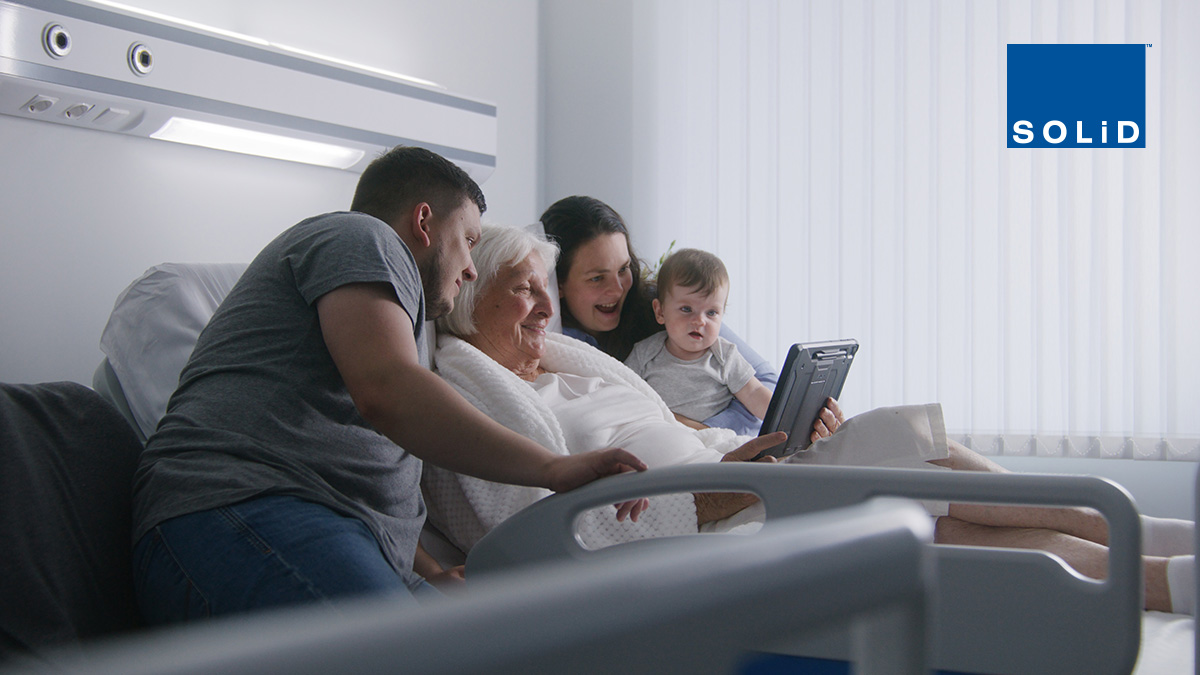
When your top priority is delivering first-rate care, every aspect of the patient experience is mission-critical. In today’s hospitals and healthcare facilities, an integral part of this experience is ensuring reliable access to mobile voice and data connectivity.
Poor in-building mobile coverage impairs patient care quality in many ways. As more hospitals adopt a bring-your-own-device (BYOD) policy, seamless connectivity is essential to provide physicians and staff with secure, reliable access to electronic healthcare records, patient intake forms, and application data across the medical campus. Medical staff often use mobile devices to conduct video consultations, remote monitoring, virtual visits, and other telehealth services as well. In fact, telehealth and digital health tools are vital for providing access to care for more than 30 million Americans.
Reliable, 24×7 wireless connectivity also is crucial for a growing number of healthcare facilities that use the Internet of Medical Things (IoMT) to monitor and maintain diagnostic equipment, pharmaceuticals, and hospital supplies. Moreover, patients and visitors now expect always-on connectivity for laptops and smartphones, whether they want to review laboratory test results, video chat with family members, or just make a phone call without constant dropped signals.
All of these applications require secure, ubiquitous in-building connectivity to ensure optimum health outcomes and a first-class patient experience. What can healthcare IT professionals do to deliver a better-connected experience for patients, staff, and visitors?
To 5G and Beyond
As 5G adoption continues to escalate, mobile network operators (MNOs) are adding more radio frequency (RF) spectrum to meet the need for increased network coverage and capacity. New mid-band frequencies, such as the C-Band and Citizens Broadband Radio Service (CBRS), are easily blocked by neighboring structures, modern building materials, and energy-efficient windows, which means that outdoor network signals cannot easily penetrate buildings, interior walls, furniture, and other obstacles. As a result, more patients, staff, and visitors experience dropped calls and poor service quality throughout hospitals and medical campuses. Furthermore, the unique interior layouts typical in many hospitals often make this situation worse.
Although many modern healthcare facilities have an in-building distributed antenna system (DAS) in place to provide cellular coverage, most legacy platforms need to be updated or replaced to work with new mid-band 5G frequencies. For those hospitals with a modular, multi-band system such as the ALLIANCE 5G DAS platform, adding support for new frequency bands is simple and straightforward. However, some modifications will be necessary due to the particular characteristics of the mid-band frequency bands.
Technology Transitions
Mid-band spectrum is well-suited for 5G network deployments because it provides access to larger frequency channels, which enables greater capacity. Yet, these wider channels also consume more radio output power, leading to weaker signals and smaller coverage area per antenna. In addition, the mid-band spectrum signal propagation range is shorter than legacy mobile communications spectrum, further impacting 5G capacity and coverage reach.
For example, when using C-Band spectrum, in-building coverage per antenna is roughly 15 percent of that provided by legacy mobile frequencies at the same power level. This means that an antenna providing a little more than 1,000 square feet of coverage with 4G would only cover around 150 square feet with the 5G C-Band in a typical building with furniture and sheetrock walls.
Ultimately, in addition to upgrading DAS equipment to support new 5G frequencies, configuration changes are needed as well to achieve the same coverage footprint as legacy DAS equipment. One option is to add amplifiers that provide 4 to 10 times more output power per antenna, eliminating “dead zones” and spotty coverage. On the other hand, when a legacy system already uses high-output power amplifiers, a better solution may be a fiber-to-the-edge overlay system to support new 5G frequencies.
A fiber-to-the-edge system like the SOLiD ALLIANCE edgeROU carries transmissions all the way to the edge of the network, bringing high-speed data and voice closer to users for improved quality. A common fiber infrastructure also provides the high performance, low latency, and inherent data security required to support IoMT connectivity, augmented reality and virtual reality (AR/VR) technologies, and new medical devices that require higher bandwidth. Plus, this advanced infrastructure enables hospitals to leverage the latest smart building capabilities, such as intelligent heating and lighting, or secure personnel access systems.
The Ideal Patient Experience
Today’s patient experience is continually changing. Smartphones, tablets, laptops, and mission-critical medical devices need to work all the time, everywhere, to keep healthcare facilities running smoothly.
Pervasive in-building connectivity throughout hospitals and medical campuses enables doctors, nurses, and therapists to rely on secure, BYOD mobility as they move from patient to patient. Healthcare clinicians can quickly document post-surgery notes, patient progress, or bedside vitals, uploading the data directly to the patient’s medical record. This not only increases accuracy and collaboration, it also improves efficiencies and access to care, overcoming barriers that often affect patient outcomes and increase costs.
Upgrading or installing the latest DAS systems allows healthcare facilities to deliver a secure, reliable connectivity experience that provides sufficient bandwidth for the best possible patient experience and overall well-being. That’s why a wide range of healthcare facilities throughout the U.S. rely on SOLiD’s expertise and ALLIANCE DAS equipment, connecting multiple cellular networks and distributing the signals to every corner of their campus. These include Boston Children’s Hospital, Colorado Children’s Hospital, Memorial Sloan Kettering Hospital, Evans Army Hospital, Intermountain Medical Center, SLC Lutheran Medical Center, Santa Barbara Cottage Hospital, and multiple Kaiser Hospitals.
To learn more about how SOLiD can help you build a healthy mobile communications infrastructure to enable outstanding patient experiences and an excellent standard of care, visit: solid.com/us/industries/healthcare.
Why DAS as a Service is the Right Investment Right Now
 Today’s global economy runs on connectivity. Indeed, Internet access is now considered to be an essential utility, with billions of dollars being spent on broadband access. In the U.S., government infrastructure programs such as the Internet For All Initiative are doling out huge grants to ensure equal Internet access for everyone.
Today’s global economy runs on connectivity. Indeed, Internet access is now considered to be an essential utility, with billions of dollars being spent on broadband access. In the U.S., government infrastructure programs such as the Internet For All Initiative are doling out huge grants to ensure equal Internet access for everyone.
As demand for always-on digital voice and data access continues to skyrocket, high-quality mobile service is increasingly important to consumers and businesses alike. That demand is largely indoors, where more than 80 percent of all mobile voice and data traffic occurs. This in-building connectivity need is only escalating due to the demand for 5G mobile service, Industry 4.0 private networks, and Internet of Things (IoT) connectivity.
Yet, many modern building materials block radio frequency (RF) signals, restricting indoor mobile communications and leading to poor service and dropped calls. Therefore, to deliver seamless connectivity throughout commercial buildings, enterprise offices, high-rise apartments, and university campuses, building owners and network operators frequently install fiber-to-the-edge distributed antenna system (DAS) technology. In fact, the global DAS market is expected to maintain an annual growth rate of more than 6 percent to reach a value of $13 billion by 2028.
Funding DAS
Without reliable in-building mobile connectivity, many businesses are at a competitive disadvantage. Yet, the average enterprise or commercial building tenant may not be willing or able to invest in DAS equipment deployment to provide dedicated capacity for their employees and customers. This market need has given rise to DAS Network as a Service (NaaS) — a new trend in digital infrastructure investments.
System integrators and third-party network operators deploy DAS platforms in commercial buildings and venues, providing network connectivity to building owners and tenants. The network operator assumes the risk of purchasing, deploying, and operating the DAS equipment, delivering maximum coverage and capacity quickly and efficiently throughout the building or campus. With a DAS NaaS offering, building owners have an affordable, pay-as-you-go method to quickly solve poor in-building mobile coverage and maximize commercial real estate value with minimal upfront investment.
With the popularity of this NaaS offering, the DAS as a Service (DaaS) trend is quickly disrupting the in-building connectivity landscape. That’s why a growing number of digital infrastructure investors are investing in the DaaS market, seeking a safe haven to maximize their infrastructure investments.
Boost Return on Investment
Poor mobile connectivity is no longer acceptable in today’s economy. To ensure the reliable delivery of seamless in-building 5G service, a number of leading DaaS service providers, including Strategic Venue Partners (SVP), RF Connect, and CTS are deploying the SOLiD ALLIANCE 5G DAS solution. The SOLiD ALLIANCE edgeROU FIBER2ANTENNA technology offers maximum coverage, capacity, and speed in a small, energy-efficient, aesthetically pleasing platform, improving productivity, ensuring customer satisfaction, and increasing property values.
Rob Cerbone, VP of Product Management and Marketing at managed service provider Communication Technology Services (CTS), said, “We’ve definitely seen more market demand for NaaS. The advantages of NaaS for building owners who need to provide high-quality in-building connectivity include staff optimization, preservation of capital, and the assurance of future-technology service. Most of all, NaaS allows companies to focus on their core business.”
“Increasingly, we recommend DAS as a Service to customers because it empowers them to forego the upfront capital expenditure of a DAS and, instead, reallocate that capital for other uses or investments. Equally compelling, the DAS as a Service model guarantees technology refreshes and band addition upgrades over the term, which ensures connectivity requirements are met across what we at RF Connect refer to as the 'Now, Near, and Far' timeframe,” explained Josh Gerst, VP of Engineering at RF Connect.
“Strategic Venue Partners is transforming wireless connectivity by bridging the gap between enterprise venues and carriers, paving the path for the world's most vital industries to grow and adapt with the evolving demands on their digital infrastructure. We partner with venues and carriers to design, develop, install, own, operate and upgrade bespoke in-building wireless systems, utilizing the latest technologies such as the SOLiD ALLIANCE edgeROU FIBER2ANTENNA and more,” noted Justin Marron, CEO of Strategic Venue Partners (SVP). “SVP’s unique and long-term approach to delivering critical infrastructure reduces the connectivity and financial burden for enterprise businesses by meeting their existing needs while planning for future technological changes and developments through a utility-based model that benefits everyone.”
With NaaS powered by the SOLiD ALLIANCE DAS edgeROU solution, commercial building owners are providing tenants with the in-building 5G coverage they crave, with no upfront investment and minimal risk. And savvy digital infrastructure investors and financial firms have an ideal opportunity to maximize their return on investment in this emergent market. To learn more about in-building mobile coverage, DAS, and NaaS, please visit our video library at https://solid.com/us/resources/multimedia/videos.
Why TAA Compliance Matters in Telecom
As cyber threats continue to grow worldwide, the origin of goods and materials becomes ever more important. This is particularly crucial in the telecommunications industry, where cyber-attacks or state-sponsored espionage can have devastating consequences.
For example, national security concerns prompted the Federal Communications Commission (FCC) to pass the Secure and Trusted Communications Networks Act of 2019, which explicitly bans the use of telecom equipment manufactured by certain Chinese companies. These concerns are so critical that the U.S. government is spending billions of dollars to replace legacy network equipment from China in existing networks.
However, the movement to regulate the country of origin for imported goods and materials dates back well before 2019. The Trade Agreements Act (TAA) was originally established in 1979 to bolster America’s involvement in the international trade market. This statute established certain rules to regulate the market, including a requirement of TAA compliance to qualify for Federal contracts administered by the General Services Administration (GSA).
What is TAA Compliance?
According to the TAA, all products listed on a GSA schedule or other government contract must be wholly manufactured or "substantially transformed" in either the U.S. or a TAA-designated country. In other words, those goods that are not made in America need to originate in specifically designated countries or be transformed into a 'new and distinctly different' article of commerce. Countries that are not TAA-compliant include China, India, Iran, Iraq, and Russia, among others.
Like the Secure and Trusted Communications Networks Act, compliance with the Trade Agreements Act plays an important role in safeguarding the federal supply chain, and the U.S. government has made TAA compliance enforcement a priority. That’s why violating the TAA or making false claims can be a costly mistake, resulting in multimillion-dollar fines and exclusion from future federal contracts.
Made in America…?
The truth of the matter is that no distributed antenna system (DAS) equipment is wholly manufactured in the U.S. However, it still matters where in-building DAS components are produced. SOLiD is a global company headquartered in South Korea, and we are committed to delivering secure products that comply with statutory and regulatory requirements.
We manufacture all SOLiD ALLIANCE head-ends and edgeROU remote units in our South Korea facility, and we have the capability to manufacture our 2W, 5W, and 20W remotes in South Korea as well if needed. SOLiD has manufacturing facilities in South Korea (TAA designated) and Vietnam (non-TAA designated). Moreover, our Assembly, Configuration, and Test procedures (ACT) are implemented in the U.S. to provide industry-leading reliability and convenience, and achieve sustainability goals by reducing shipping and packaging waste.
At SOLiD, we are dedicated to offering innovative, reliable DAS solutions that comply with TAA requirements to meet the in-building mobile coverage needs of the world’s best-known and most challenging venues. To learn more about TAA-compliant DAS solutions or to discuss your project’s requirements, contact us: solid.com/us/contact.
SOLiD Appoints Scott Deweese as President of SOLiD Americas
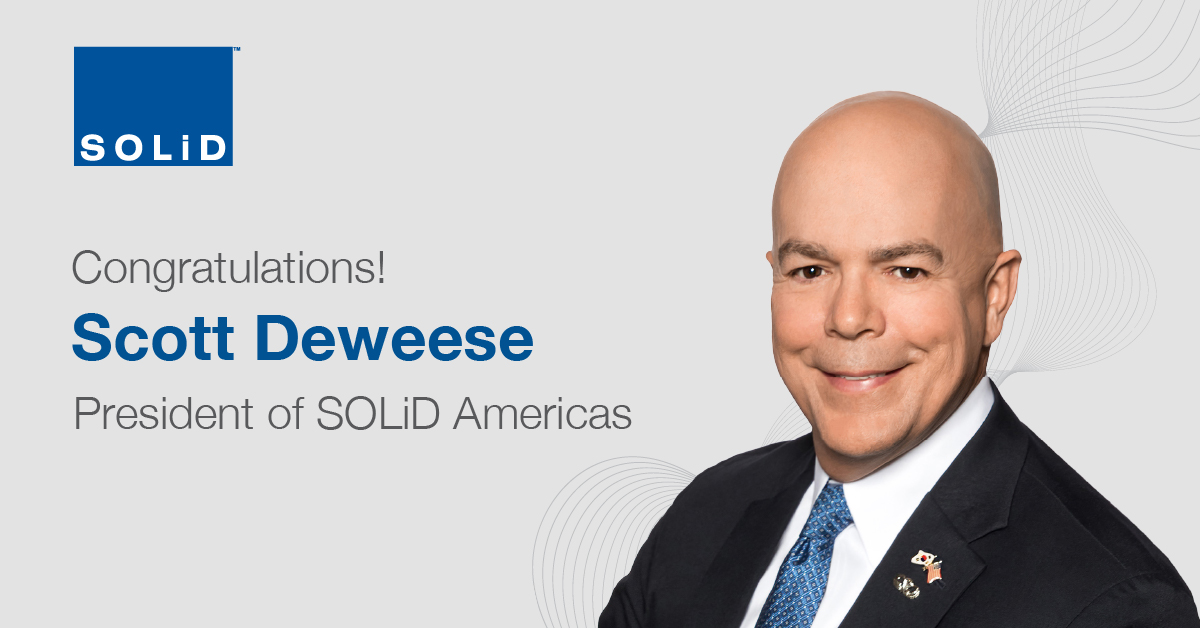 SOLiD, the leader in cellular in-building mobile coverage, has named Scott Deweese President of SOLiD Americas. In this position, Scott will be responsible for executive leadership and guidance, and oversee technology and product development for SOLiD’s industry-leading connectivity solutions including distributed antenna system (DAS) platforms and Open RAN radio units (O-RUs).
SOLiD, the leader in cellular in-building mobile coverage, has named Scott Deweese President of SOLiD Americas. In this position, Scott will be responsible for executive leadership and guidance, and oversee technology and product development for SOLiD’s industry-leading connectivity solutions including distributed antenna system (DAS) platforms and Open RAN radio units (O-RUs).
Scott brings SOLiD over 20 years of business development, sales, operations, and executive management experience in the wireless industry. Since joining SOLiD in 2016, Scott has served as General Manager, Sr. Vice President of Sales, responsible for Sales and Business Development, and Sr. Vice President of Operations, responsible for all post-sales operations across the Americas.
"We are pleased to appoint Scott Deweese as President of SOLiD Americas," said Seung Hee Lee, Ph.D., Vice Chairman and Global CEO, SOLiD, Inc. "Scott has earned the respect and admiration of our entire organization with his successful guidance of sales and operations across the Americas.”
What’s on the Horizon for Connectivity Technology?

Since the introduction of mobile networks, wireless communications technology continues to evolve. And if it seems to be advancing more quickly than ever before, that’s not an illusion – the adoption of 5G technology is growing faster than any previous mobile technology generation.
But this relentless evolution doesn’t happen in a vacuum; it creates ripple effects across the telecommunications landscape, impacting network technology in many ways. So, with that in mind, what other trends can we expect to see in 2024 and beyond?
Going Private
The rapid rise of 5G is largely due to a range of benefits this technology brings, including ultra-low latency, faster data speeds, and high reliability. Not surprisingly, many enterprises, universities, and manufacturers find that these advantages also make 5G ideal for private networks, particularly when using unlicensed spectrum such as Citizens Broadband Radio Service (CBRS) frequency bands throughout buildings and across campuses.
Private 5G network deployment provides dedicated bandwidth, scalable capacity, and reliable security that delivers seamless connectivity for mobile and IoT-enabled devices, as well as mission-critical industrial use cases, improving both productivity and profitability. In fact, with high accuracy and low latency, private 5G networks empower innovative, data-driven Industry 4.0 edge applications such as manufacturing automation, occupational health and safety, real-time indoor/ outdoor positioning intelligence, smart asset tracking, and predictive maintenance. As a result, we can expect to see continued adoption of private 5G networks across a wide range of industries.
Open to Opportunity
For many mobile network operators (MNOs), the key to realizing the true promise of 5G is the continued disaggregation of network architecture with the adoption of Open RAN. That’s because MNOs can reduce costs, improve performance, and speed service delivery with open, multi-vendor networks that are compliant with interoperability standards like the O-RAN ALLIANCE specifications, as opposed to being locked in a single or dual-vendor approach.
As the mobile industry continues to embrace an open ecosystem for wide-area networks, Open RAN technology also impacts the evolution of network architecture for in-building networks, driving the need for greater interoperability among distributed antenna systems (DAS) components. For example, interoperability between Open RAN technology and a neutral host DAS RF interface unit enables network operators, neutral hosts, and system integrators to reduce space and power requirements for faster, simpler in-building coverage deployments to create a truly seamless 5G experience everywhere.
Moreover, the anticipated surge in private 5G networks will continue to drive innovative advancements, such as the SOLiD CBRS O-RAN Radio Unit (O-RU) designed to improve service agility, scalability, and efficiency of private 5G networks. With support for 4G LTE and 5G New Radio (NR) in standalone (SA) or non-standalone (NSA) architecture, this O-RU is compatible with various virtual or physical baseband products via an eCPRI interface.
Likewise, the evolution to more open, multi-vendor networks is creating a desire to further reduce costs and improve efficiencies. Technology like the SOLiD Fronthaul Multiplexer (MUX) eliminates the need for dedicated bandwidth for each radio unit, enabling more economical use of spectrum.
RAN Sharing Revolution
The desire for more efficient use of spectrum also is contributing to a growing interest in active RAN sharing, which helps MNOs reduce costs and avoid potential problems caused by over-building their networks. This shared infrastructure approach offers a number of benefits, from improved cost efficiencies to reduced environmental impacts, and various configuration options range from minimum to maximum sharing.
With a multi-operator RAN (MORAN), multiple MNOs share radios, antennas, towers, and power, while retaining dedicated baseband units (BBUs). The MORAN configuration allows full visibility and control of BBU equipment but requires changes to fronthaul switches to enable multiple interfaces. A ‘shared O-RU’ feature is a cost-effective option when implementing O-RAN networks.
Alternatively, with a multi-operator core network (MOCN) architecture, multiple MNOs share one or more CBRS channels to achieve maximum RAN sharing and cost efficiency. This configuration allows MNOs to pool spectrum allocations for greater resource efficiency, although it affords limited visibility of the RAN. As MNOs face ever-greater cost pressures, active RAN sharing is expected to grow in popularity, and we anticipate that both MORAN and MOCN will be implemented.
Service on Demand
An emerging trend across many different network technologies is the rise of Network as a Service (NaaS) offerings, due to the appeal of reduced capital expenditures (CapEx), faster service provision, and simplified management. Likewise, for some commercial building owners and enterprises, the best option to quickly obtain pervasive in-building coverage may be with a neutral-host DAS as a NaaS offering.
This DAS NaaS option, such as the service provided by SOLiD’s partner Tillman Digital Cities, takes the guesswork out of in-building connectivity with an end-to-end turnkey system. As the owner and operator of the in-building DAS infrastructure, TDC finances, operates, manages, and maintains the network powered by the SOLiD ALLIANCE 5G fiber-to-the-edge DAS, delivering maximum bandwidth and low power consumption in an unobtrusive design.
Tomorrow and Beyond
As future mobile networks evolve to progressively more open, shared architectures, these network changes will transform how in-building DAS equipment operates. SOLiD has been at the forefront of connectivity technology innovation for 25 years, and we will continue to deliver the most efficient, sustainable, cutting-edge technologies for always-on, in-building connectivity. To learn more, visit: https://solid.com/us/open-ran.
How Poor Connectivity Impacts Patient Outcomes
Originally posted on healthcareittoday.com
When delivering first-rate care, every aspect of the patient experience is critical. And in today’s always-connected 5G world, much of that experience depends on pervasive, secure mobile device connectivity. Physicians, nurses, staff, patients, and visitors need seamless indoor wireless coverage.
As a result, the health of a hospital’s in-building wireless network is more important than ever — from the patient intake process to the delivery of accurate medical device results to secure transmission of electronic health records. So, what can healthcare IT professionals do to ensure a better-connected experience for patients, staff, and visitors?
Mobile Connectivity Matters
Spotty or nonexistent In-building mobile connectivity impacts the patient experience significantly. Consider if a patient is trying to use their smartphone to review laboratory test results or a family member wants to video chat with other family members about a loved one’s care. Moreover, many healthcare facilities now allow a bring-your-own-device (BYOD) policy, which means that physicians and staff must have secure and reliable 24×7 connectivity to the major mobile network providers to access electronic healthcare records and application data or to consult with a distant specialist about a patient’s treatment.
Now, consider cutting-edge technology use cases that are still on the horizon. Future healthcare technology might include remote surgery enabled by augmented reality (AR) and virtual reality (VR) or the use of complex artificial intelligence (AI) and machine learning (ML) algorithms to conduct patient diagnoses. Tomorrow’s healthcare providers will use the Internet of Things (IoT) to monitor and maintain diagnostic equipment and other medical devices. These applications require mission-critical, secure, reliable, and ubiquitous connectivity to ensure optimum patient outcomes.
Technology Evolution Concerns
The inconvenient truth is that hospitals and medical campuses are not built with mobile signal transmissions in mind. Neighboring structures, modern LEED building materials, energy-efficient windows, and unique interior layouts present physical challenges to device connectivity indoors. Compounding this situation is the nearly pervasive adoption of 5G technology, which is rapidly changing how we stay connected. In fact, the number of 5G subscribers is predicted to reach 8 billion worldwide by 2028, up from approximately 1.4 billion already.
As demand for 5G continues to grow, the need for greater network coverage and capacity requires new 5G radio frequency (RF) spectrum allocations. In response, the U.S. Federal Communications Commission (FCC) opened up new mid-band frequencies, such as the C-Band and Citizens Broadband Radio Service (CBRS), to supplement the higher mmWave frequencies already allocated for 5G.
Unfortunately, although these new mid-band frequencies offer an ideal mix of speed, capacity, and coverage for outdoor wide-area 5G networks, their signal characteristics are not necessarily ideal for in-building connectivity. In fact, the mid-band and higher spectrum 5G frequencies in use today are even less likely to penetrate building materials than the lower frequencies traditionally used for mobile communications. This means that signals from outdoor networks are blocked not only by neighboring buildings but also by interior walls, furniture, and other obstacles, leading to dropped calls and poor quality of service (QoS) inside buildings.
Plan for Today and Tomorrow
To ensure that patients, staff, and visitors can access 5G communications inside buildings and across campuses, existing in-building distributed antenna system (DAS) platforms must be updated or replaced to work with the new mid-band frequencies. If the DAS platform cannot be upgraded, this might require an expensive and time-consuming “rip and replace” project. On the other hand, those healthcare facilities with a modular, multi-band DAS may be able to add new frequency bands to their existing equipment. However, there will be some necessary modifications due to the particular characteristics of the new frequency bands.
Mid-band spectrum is well-suited for 5G wide-area network deployments because it provides access to larger channels compared to older technologies, which enables significantly greater capacity. Yet, wider channels consume more radio output power, resulting in a smaller coverage area per antenna due to weaker signals. This is compounded by the fact that the mid-band spectrum also offers a shorter signal propagation range than the previous mobile communications spectrum.
Moreover, interior building materials such as walls, cubicles, and furniture will further impede penetration of 5G frequencies throughout the building. For example, indoor C-Band coverage per antenna is roughly 15 percent of the coverage provided by legacy mobile frequencies at the same power level. In fact, in a typical building with furniture and sheetrock walls, an antenna providing a little more than 1,000 square feet of coverage with 4G in the legacy Advanced Wireless Service (AWS) band would only cover around 150 square feet with the 5G C-Band.
As a result of all these obstacles, achieving the same in-building coverage footprint will require changes in how the upgraded DAS equipment is configured. This might mean the addition of amplifiers that provide 4 to 10 times more output power per antenna to prevent “dead zones” where coverage drops off. Alternatively, if the legacy system already uses high-output power amplifiers, adding a fiber-to-the-edge overlay system to support the new 5G frequencies is another option. This allows high-speed data and voice transmissions to be carried all the way to the edge of the network, closer to the users, for enhanced connectivity and improved QoS.
With a common fiber infrastructure throughout buildings and across campuses, healthcare IT professionals can take advantage of the latest optical networking capabilities for wired local area networks (LANs). This fiber infrastructure provides optimized performance, minimum latency, and inherent data security to support IoT connectivity, AR/VR technologies, and new medical devices that require higher bandwidth. In addition, a fiber LAN enables more efficient building management systems, such as intelligent heating and lighting, or secure personnel access systems.
Improve Overall Experiences
Today’s patient experience is dynamically changing. Smartphones, tablets, laptops, and mission-critical medical devices need to work all the time, everywhere, throughout healthcare facilities. As the Tier 1 mobile service providers continue building their networks using mid-band 5G frequencies, in-building communications systems must evolve to keep pace. This evolution enables healthcare facilities to deliver a more pervasive, secure connectivity experience that facilitates BYOD mobility and provides sufficient bandwidth for the best possible patient experience and overall well-being.
How a More Sustainable DAS Speeds the Race to Net-Zero
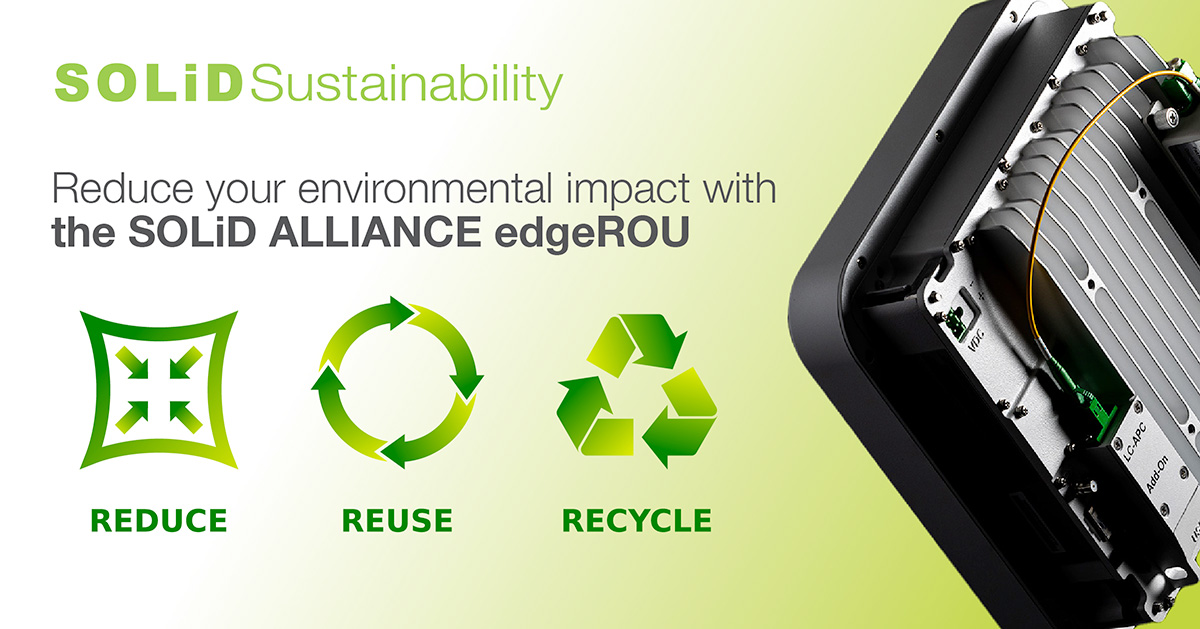 Sustainability has become an urgent focus for many enterprises, governments, and communities worldwide. Yet as connectivity demands escalate, overall communications network electricity usage continues to rise. This means it is increasingly difficult for network operators to achieve sustainability goals and building owners to meet and building emissions compliance requirements on the road to achieving Net-Zero emissions.
Sustainability has become an urgent focus for many enterprises, governments, and communities worldwide. Yet as connectivity demands escalate, overall communications network electricity usage continues to rise. This means it is increasingly difficult for network operators to achieve sustainability goals and building owners to meet and building emissions compliance requirements on the road to achieving Net-Zero emissions.
At SOLiD, this emphasis on sustainability is nothing new. In fact, we have a history of offering reliable, sustainable solutions that contribute to a greener planet in several ways.
On Track to Sustainability
SOLiD sustainability begins with engineering excellence, resulting in DAS solutions designed to deliver the highest performance with the lowest carbon footprint. For example, the ALLIANCE edgeROU DAS platform supports the fully-occupied 280 MHz of the C-Band while consuming a maximum of 35 watts — just one-third the amount of energy required for alternative fiber-to-the-edge DAS remotes, despite providing a much higher RF output power.
Each edgeROU remote supports the entire bandwidth of up to four frequency bands, allowing each remote unit to accommodate more spectrum, frequency bands, and services from the public cellular networks. This means that in-building network managers need fewer SOLiD DAS remotes to achieve the same coverage and capacity as competing solutions. Plus, the ALLIANCE edgeROU is the smallest active DAS remote available.
As a result, with each remote consuming less energy, being smaller, lighter in weight, and with fewer remotes needed overall for seamless coverage, far fewer resources are consumed in manufacturing, shipping, and operating the ALLIANCE edgeROU platform. This makes it the industry’s “greenest” active DAS solution and the most affordable with a low total cost of ownership (TCO). Likewise, our SOLiD ALLIANCE high-power remote optic unit (HROU) solutions, such as the Mid-Band HROU_4000, include a power-saving function, allowing them to reduce power when traffic demand is low.
Modular Momentum
In addition to reducing resource consumption, there is another important aspect to the SOLiD sustainability track record as well. Because the SOLiD ALLIANCE platform is modular, network operators and building owners can easily replace, reuse, and upgrade individual components as needed to keep up with evolving telecom technologies, such as today’s 5G and tomorrow’s 6G mobile networks. This eliminates the significant time, expense, and waste generated by a rip-and-replace project to swap out an entire non-modular DAS system.
Moreover, the modularity of SOLiD DAS equipment allows us to ship all the system components to one place, where we assemble the head-ends before delivering the assembled system to our customer’s site. This enables us to recycle the component packaging rather than leaving that responsibility to network operators or system integrators who may not have ready access to recycling facilities.
Sustainable Innovation
For our society to achieve needed Net-Zero goals, we all have to do our part, including network operators, building owners, system integrators, and suppliers. Sustainable network solutions and practices provide powerful tools to aid the decarbonization of the worldwide economy — reducing the network’s carbon footprint and helping businesses make better choices to build a more sustainable model for the future.
For 25 years, SOLiD has continuously innovated to deliver best-in-class solutions for a globally complex, ever-evolving telecommunications industry. As rising connectivity demands drive the need for greater global sustainability, we will continue to innovate to deliver the most reliable, sustainable, and high-performance connectivity solutions on the market. To learn more, visit: solid.com/us/products/alliance-das.
